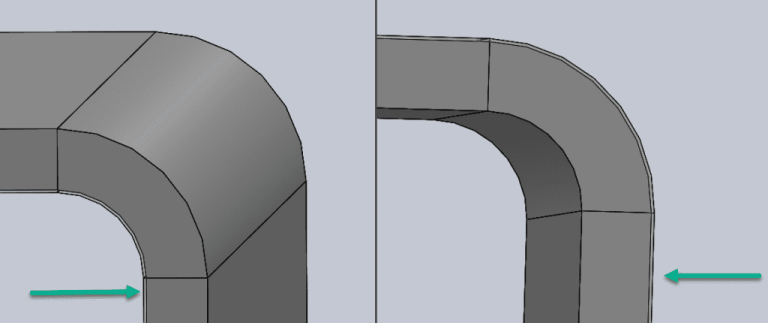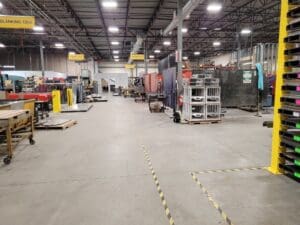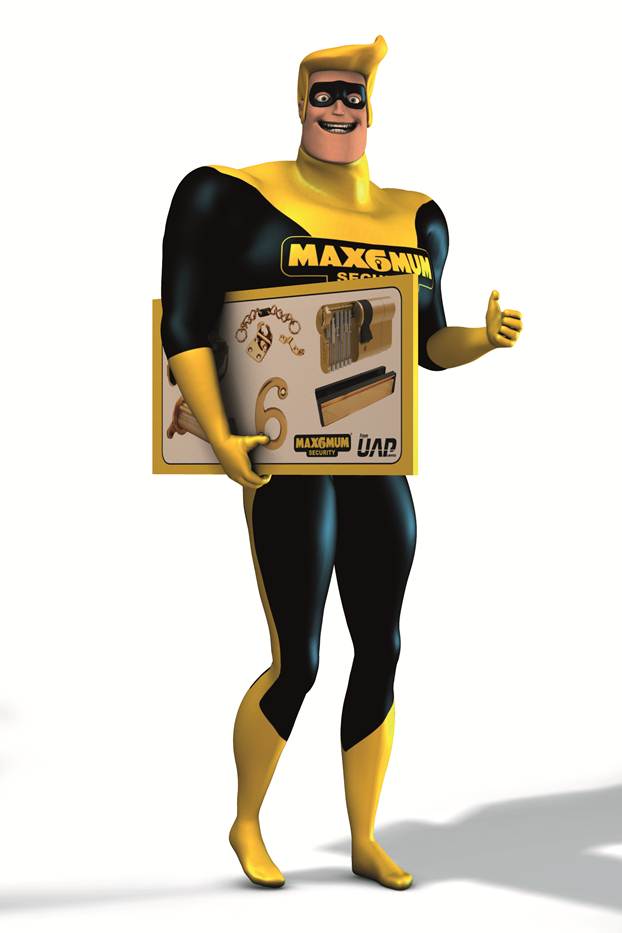Trolley jacks and air jacks – what to consider How to choose tyre service and car repair tools
When you think about it, there is only one answer. Both types of jacks are useful at a car workshop. However, they can be used at totally different situations.
When to choose a pneumatic air jack? And when a regular trolley jack? Learn more by reading the article below.
Trolley jack at a tyre service
When you hear the phrase “tyre service jacks”, for sure you got the following products in mind:
- pneumatic air jacks
- scissor lifts
But – how about the regular car jack? Apparently, it may turn useful also at a tyre service. Take cars with lower clearance, for instance. And we don’t mean cars that underwent some customization. Consider these two examples:
- Peugeot 407
- Mazda 3 I generation (2003-2009)
These are very popular cars, aren’t they?
And would you be able to put a pneumatic air jack under them? Well, we bet you would not!
Now – consider cars with plastics sills on and the jacking point much deeper (some Volvos). In this case, a car jack would be a better choice.
Plus to that – it might be a good idea for working with cars that have rusty sills.
Why? Don’t forget that a car jack is much more delicate than pneumatic air jacks. And there are cars in which the sills are in bad condition and hitting them with a jack may cause some additional damage.
Examples? Many Mercedes models from the 90s. Like W210 or W638. Or even other cars where the sills are rusty.
Pneumatic air jack – is it a good idea to get it?
In general, pneumatic air jacks are much more professional than car jacks.
The rubber parts get air from the pneumatic system to get to the working height. This means, you can easily lift any car, making the underbody jobs much easier.
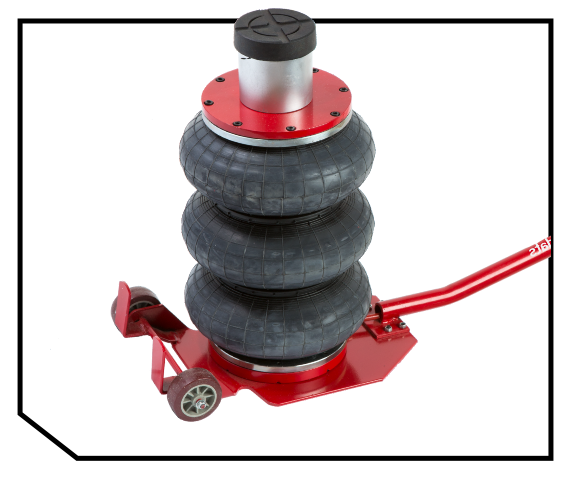
Getting an air jack – what to consider?
There is a wide array of pneumatic air jacks on the market. Which tool should you choose? What factors should you consider while using it?
The capacity is the most important thing. You can choose from 2 to 8 tons. It might be a good idea to get a tools with some additional capacity. If there comes a car heavier than the ones you usually work on, you will be able to work on it.
Size of casters
A pneumatic air jack is quite heavy. Some model weight over 30 kilograms. And the bigger the casters, the easier it is to move around the garage.
There are pneumatic air jacks with special overlays. They make it much easier to lift a car (around 10-20 cm).
Trolley jack – when should you get one?
It is useful in both car services and tyre repair companies. And don’t forget that many DIY lovers choose air jacks for their personal needs.
Trolley jack – what to consider?
Apart from the reliable and sturdy structure, the lifting time is important. Many car jacks come with quick lift pedal. This makes the saddle go up much faster, lifting the car in a few seconds.
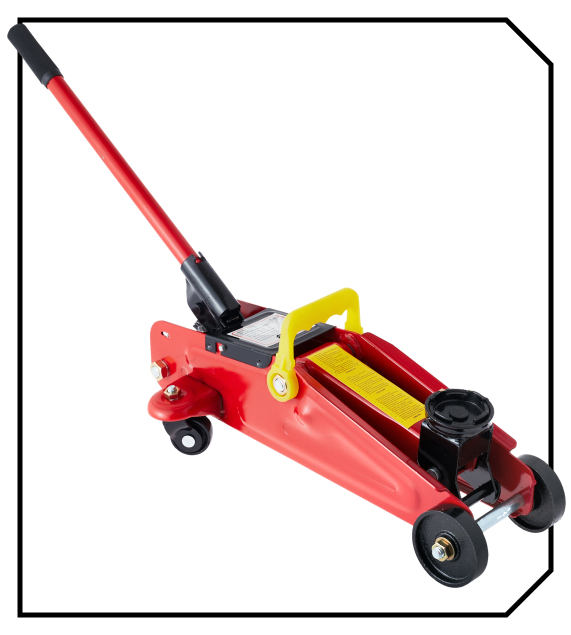
And that’s not it. Choosing an air jack, you should consider:
- handle length
- caster size
- hydraulic actuator span
- lifting time
Handle length
How to assess it while buying a car jack online?
The rule is easy here. The longer the handle, the easier it is to use the jack. For instance, some products we have in our offer come with handles of 94.5 in length. This means much easier operation under any car.
The handle length means a much better working comfort. To put it simply, better check it in the specification of the jack that you are looking to buy.
Caster size
This may seem like a detail but it is important anyway. The wider the casters’ span, the easier it is to use it. That’s because you can easily move the jack on any surface – be it grass, be it concrete floor. Large casters mean a much more moving of the jack.
Hydraulic actuator stroke
Why is that important? The larger it is, the higher does the jack lift. Be sure to check information on that. Cars like SUVs or crossovers are getting increasingly popular these days. So, be sure that the car jack you are looking at is able to lift cars like that.
Lifting time
Don’t want to toil with lifting one car after another? Working with a car jack, especially in case of heavier vehicles can be tiresome. You may consider getting a jack with the so-called quicklift pedal. What is that for?
It makes the lifting much quicker. It allows the actuator to work much better.
Is getting a trolley jack a good idea?
Yes. Even though you may consider it an amateur tool, you can think of getting it to your workshop. It is able to lift various cars at different situations. What if all the lifts are taken and the customer is waiting by the gate? Just take the car jack, lift the car and support it, using jack stands. Obviously, you won’t do the challenging jobs this way. However, when you plan to take a wheel off, the car jack would be great.
Advantages
- light structure,
- low price (nice quality jacks are available at nice price)
- easy work,
- can be used anywhere (does not need pneumatic installation),
- wide working range – example: from 135 to 435 mm.
Disadvantages
- these car jacks are not for intensive use – it may wear out quickly,
- using the jack requires loads of effort,
- little capacity – max. 3 tons.
How about lower cars?
This is one of the things where pneumatic air jacks are not a good choice. Obviously, this depends on the car’s model but in most cases jacks like that are unable to deal with low cars.
Take Peugeot 407. Would you say that a pneumatic air jack won’t handle it? Well, we heard about cases where pneumatic jacks are unable to deal with that car.
And a car jack would be a great choice in these cases. Especially the low-profile one.
In the rest mode the height is 7.8 cm only. So, it would fit even low-clearance cars. It lifts up to 49.5 cm, so any suspension or wheel jobs are much easier.
Low-profile or regular jacks?
This question really makes sense. Let’s compare the parameters of different car jacks – as an example, take two REDATS jacks.
| Model | Resting height |
| Low-profile car jack by REDATS | 7.8 cm |
| Car jack LS-320 REDATS | 13.5 cm |
Does it make sense to get a low-profile jack? Well, keep in mind that you might have to deal with all types of cars. It’s better to have two types of jacks. Just in case. Sometimes you may just need to do something outside, where there is no access to a post or scissor lift.
Would you resign from helping the client just because you don’t have a proper lift for the job? Well, that would not look great.
How about – jack + stands?
Such a mini version of car repair point would be a great choice for the most basic jobs. You may consider getting a set with the stands. It would be much cheaper than buying them separately.
And one more thing. Keep in mind that the car jack is only for lifting the vehicle. Don’t keep it high for a longer time. To make your work safer, consider getting a set with jack stands.
What compressor should you get?
Pneumatic air jacks are powered by compressed air. How to choose the best compressor for the air jack? Read on!

The compressor’s output efficiency is extremely important. This value tells about the real efficiency of the tool. How to understand it? The value shows the amount of air that the compressor puts out in a minute. And the air gets moved to the tools.
To put it another way – knowing this parameter will let you choose the best compressor for your needs. Wondering what output efficiency would be the best for your air jack? Well, that depends. After all, you choose the compressor not only for the jack but also other pneumatic tools at your service.
Be sure to read the information below:
| Output efficiency | Tool’s air demand | Is that enough? |
| 300 l/min | 380 l/min | NO |
| 150 l/min | 140 l/min | YES |
| 150 l/min | 150 l/min | NO |
How to understand it? Do not pick a compressor that is “on the verge”. If your tools’ air demand is equal or larger than your compressor’s output efficiency, it won’t work.
What is the air demand of pneumatic air jacks? Overall, just any piston compressor should suffice here.
To recap – why get a pneumatic air jack?
Here are the most important advantages and disadvantages
Advantages
- short lifting time (few seconds),
- work doesn’t take much effort (the mechanism would do anything for you)
- comfortable manouvers – long handle make it much easier to set the jack under the car
- wide range of capacity (up to 8 tons),
- rubber pads that protect cars’ sills
Disadvantages
- access to pneumatic installation is necessary (it’s a disadvantage outside tyre service/car repair garage)
The pneumatic air jack is much more comfortable to use. Would you imagine having to jack up a large car-derived van? Like a Volkswagen T5, for example? If you use a regular car jack, you are going to waste loads of time. And all it takes is putting the air jack under the car and turn it on. It just takes a few seconds.

Summing up…
Honestly? Both products can be useful at you workshop. Be it car jack , be it pneumatic jack
